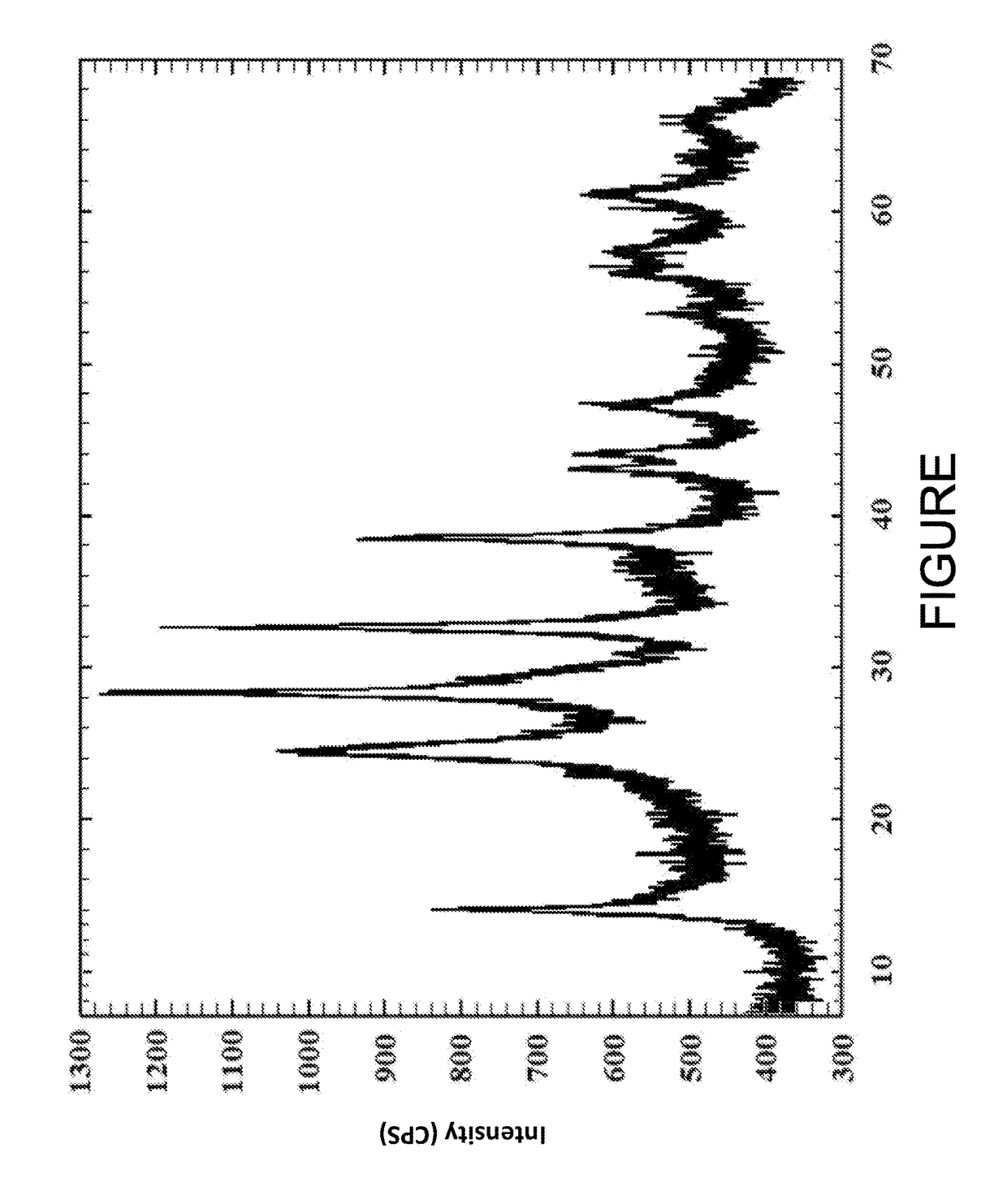Crystalline transition metal tungstate
a transition metal and tungstate technology, applied in the field of new hydroprocessing catalysts, can solve the problems of accentuated refining problems and raised doubts about the quality of the structural assessment of materials
- Summary
- Abstract
- Description
- Claims
- Application Information
AI Technical Summary
Benefits of technology
Problems solved by technology
Method used
Image
Examples
example 1
[0032]Ammonium metatungstate hydrate (25.3 g, 0.1 moles of W) was dissolved in 150 ml of DI H2O, concentrated ammonium hydroxide (25 mL, 30%) was added to this solution. A second solution was prepared by adding nickel nitrate hexahydrate (43.62 g, 0.15 moles of Ni) to 150 ml of DI H2O. The two solutions were slowly mixed together over with the pH of the final solution being adjusted to pH 6.8 using a mild HNO3 solution. The precipitate was isolated by filtration, washed with hot water and then heat treated for using a ramp rate of 2° C. per hour until the temperature reach 400° C. The material was kept at 400° C. for 24 hours. The resulting product was analyzed by X-ray powder diffraction, and the X-ray powder diffraction pattern is shown in the FIGURE.
example 2
[0033]Using a ceramic dish, ammonium hydroxide (10 ml, 30%) was added to nickel carbonate hydrate (5.07 g, 0.05 moles of Ni) over a 30 minute period. Ammonium metatungstate hydrate (12.63 g, 0.05 moles of W) was added and the resultant mixture was mixed thoroughly and then heat treated for 12 hours at 150° C. with intermittent mixing. The mixture was then heat treated further at 350° C. for 24 hours. The resulting product was analyzed by X-ray powder diffraction, and the X-ray powder diffraction pattern is shown in the FIGURE.
example 3
[0034]Using a ceramic dish, nickel nitrate hexahydrate (14.54 g, 0.05 moles of Ni), zinc nitrate hexahydrate (14.87 g, 0.05 moles of Zn) and ammonium metatungstate hydrate (17.71 g, 0.07 moles of W) were added together and the resultant mixture was mixed thoroughly before being heat treated for 12 hours at 150° C. with intermittent mixing. The mixture was then heat treated further at 350° C. for 24 hours. The resulting product was analyzed by X-ray powder diffraction, and the X-ray powder diffraction pattern is shown in the FIGURE.
PUM
| Property | Measurement | Unit |
|---|---|---|
| temperature | aaaaa | aaaaa |
| atmospheric pressure | aaaaa | aaaaa |
| autogenous pressure | aaaaa | aaaaa |
Abstract
Description
Claims
Application Information
 Login to View More
Login to View More - R&D
- Intellectual Property
- Life Sciences
- Materials
- Tech Scout
- Unparalleled Data Quality
- Higher Quality Content
- 60% Fewer Hallucinations
Browse by: Latest US Patents, China's latest patents, Technical Efficacy Thesaurus, Application Domain, Technology Topic, Popular Technical Reports.
© 2025 PatSnap. All rights reserved.Legal|Privacy policy|Modern Slavery Act Transparency Statement|Sitemap|About US| Contact US: help@patsnap.com

